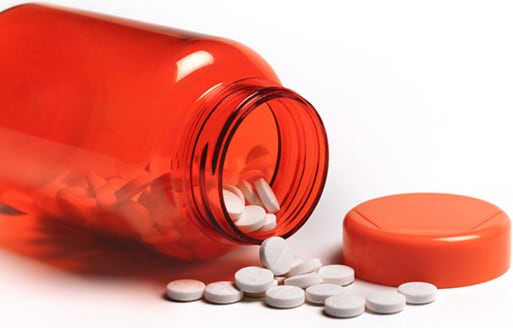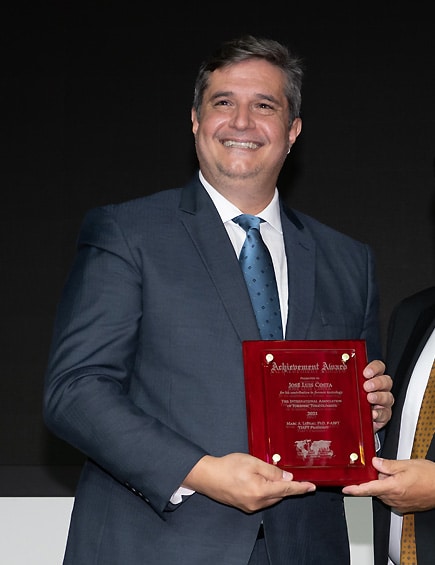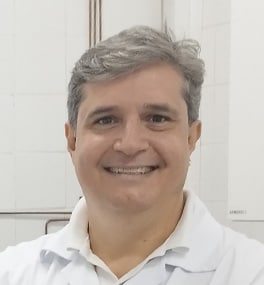Interview with Dr. Jose Luiz Costa
Vol.10 Issue 2 / Interview 1“ A trusted partnership.”
We interviewed Dr. Jose Luiz Costa, Professor of Toxicology and Head of Campinas Poison Control Center, University of Campinas (UNICAMP, Brazil).
Dr. Jose Luiz Costa, thank you very much for spending some time for this interview. At first,How did you become familiar with Shimadzu?
My first contact with Shimadzu equipment was back in 2002, when I assumed the position of Forensic Expert in the Technical-Scientific Police of São Paulo, Brazil. At that time, I worked with a GC-17A for determination of cocaine and adulterants in seized drugs. I also worked a UV-Vis spectrophotometer to analyze pharmaceuticals forms (tablets,pills), and atomic absorption spectroscopy to analyze some metals of forensic interest.
Over time, I began to work with LC-MS/MS in forensic toxicology, for the screening of drugs of abuse in biological samples (postmortem and antemortem). When I came to the University of Campinas, we continued to work with Shimadzu equipment (LC-MS/MS, LC-QTOF GC-MS/MS,HS-GC-FID) in toxicological tests, now for research and diagnosis of intoxications at the university hospital.
Could you outline the research you have been doing and let us know what discovery and achievement have been made so far?

One of the research lines of our group is the development of bioanalytical methods using the concept of green toxicological analysis (GAT). The concept of GAT is very similar to green analytical chemistry, where there is interest in analytical processes that generate less waste, use less energy, less toxic solvents and reagents, etc. In the case of toxicology, there is also the interest in using smaller biological sample volumes, or even using dried samples such as dried blood spots. The use of smaller amounts of samples is important,for example, in tests performed on newborns or children,and in pharmacokinetic studies using laboratory animals.Our group has also been dedicated to research with New Psychoactive Substances in Brazil, working on method development,case reports and epidemiological studies involving this group of drugs of abuse. In both research fields,we need robust equipment with great sensitivity and reproducibility.
Could you give us a brief introduction to any trends in illicit drugs and regional countermeasures against them in your country or region?
Talking about illicit drugs, the biggest challenge in Brazil remains cocaine (mainly as crack cocaine). We rarely have cases of methamphetamine intoxication, and heroin consumption in our country is practically zero.
In recent years we have seen some cases of abuse of fentanyl, sold in the forms of white powder, pills (similar to ecstasy) and blotter paper (similar to LSD). Identifying NPS is always a challenge for forensic and clinical toxicology laboratories. We have a screening method using the LCMS-8060 with a regularly updated MRM catalog, and since July/2022 we have been usining.

Congratulations to you on being received the TIAFT Achievement Award In 2021. Could you share in brief more about this achievement?
The TIAFT Achievement Award is bestowed upon TIAFT members who are recognized for their outstanding achievements in forensic toxicology through their scientific activities and outputs. The recipient should be a TIAFT member under 46 years of age by December 31st of the year that the award is given and have been an active member of the Association. The list of previous awardees is shown at TIAFT, TIAFT Achievement Award.
What are the main struggles in working with biological samples for toxicological analysis and how are Shimadzu instruments (HPLC, GC, GC-MS and LC-MS) helping you in both your research and your laboratory routine analysis?
Biological samples for analytical toxicology are always complex matrices, with huge amount of interferents (lipids, proteins, ions), requiring elaborate sample preparation in order to obtain reproducible results. Another problem is the fact that many toxicants are present in biological samples in very low concentrations (sometimes on the order of pg/mL), requiring that the sample preparation process has a high concentration factor. Using sensitive equipment,such as the LCMS-8060 and GCMS-TQ8050, we can detect toxicants in this order of magnitude, without the need for a large sample concentration factor. This makes sample preparation simplified, uses reduced volumes (of samples and solvents) and it is faster, increasing laboratory productivity.

Could you tell us why you chose Shimadzu as your partner when you started this project?
My experience as a laboratory analyst (Forensic Expert) has always been very good when working with Shimadzu equipment, which has always been very robust, simple to operate and easy to maintain. When I started coordinating projects, I saw that in addition to these fundamental technical characteristics, I also had good support from the sales and post-sales team here in Brazil. This made me choose Shimadzu as a partner in the projects.
Shimadzu’s strengths are the service provided by the sales and post-sales team, who are always very attentive,serving us quickly. And, of course, the very competitive costs of equipment and maintenances.
Finally, could you share any requests that you have with respect to analytical and measuring instrument vendors?
Analytical equipment is becoming more and more modern and technological, and today few people are trained to carry out minor interventions and maintenance.I would say that the company could invest in more user maintenance training, enabling them to carry out a greater number of procedures without having to request support from a specialized technician. I understand that this would be beneficial for both the user and the company’s service team.
It was significant to know what you think of us and our collaboration. We will strive to meet your expectation more than ever.
Thank you very much.


Graduated in Biochemical-Pharmacy(2001), Master’s degree in Toxicology and Toxicological (2004), PhD in Analytical Chemistry (2008). Post-doctorate at the National Institute on Drug Abuse (NIDA-NIH,2013-2014). Forensic Toxicologists at the Superintendence of the Technical-Scientific Police of São Paulo (2002-2016).Past-President of the Brazilian Society of Toxicology (SBTox, 2012-2013). In 2021, received the TIAFT Achievement Award in recognition of his contribution to forensic toxicology. Currently, Associate Professor at the Faculty of Pharmaceutical Sciences, University of Campinas and Executive-Coordinator of the Campinas Poison Control Center.
